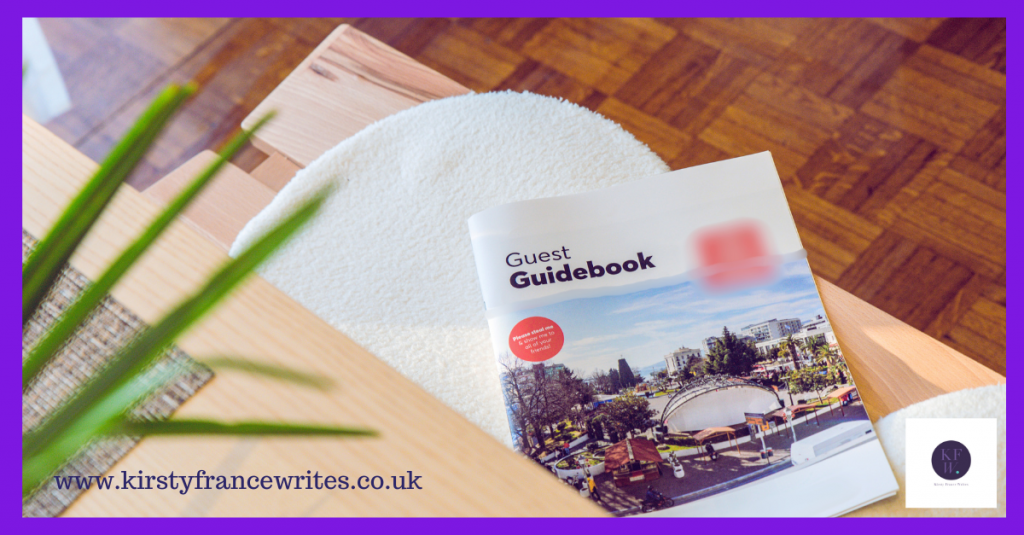
Asking this question is a bit like asking how long a piece of string is. It depends. (That’s also an answer I often gave when I was a solicitor.) The information copywriters need to work with you depends on you, your business and the person you work with. It can also change over time. The most important thing to remember is that a good copywriter will explain how they work and what they need from you so you know what to expect.
In this post, I share some of the information I’ll ask for when we meet for a chat and if you decide to work with me.
Do we get on?
I won’t ask this as a direct question, but I think about it when I chat with a potential new client. I work mainly with small businesses, and getting your personality into your content is important. If the conversation is awkward or disjointed, you’re less likely to be yourself, so it won’t come across in your marketing, and you won’t get what you’re paying for.
Who do you want to talk to
If you try to market to everyone, you’ll end up with bland, boring copywriting that doesn’t speak to anyone. Think about your ideal customer and how you talk to them in real life. When you understand their lives and what they need or want from you, we can focus on them and use language that helps them feel understood.
What your business does
I know this is ridiculously obvious, but this wouldn’t be a complete list without it. You might offer a few different services or products or just one. An overview of what you do and how you work will help your copywriter think up new ideas and ways to communicate with your audience.
What does your brand stand for
Massive corporations invest heavily in determining their brand position and understanding what people think when they hear their name or see their logo. You don’t have to spend millions, but you should consider what you want people to feel when they see your social media posts or visit your website. If you’re a one-person business, your personality and values inform your branding. You might be friendly and approachable or luxurious with a hint of mystery. You might offer a high-end, tailored service but still be down-to-earth enough to chat over a cuppa. (That’s what I’m aiming for, by the way.) The language you use sets the tone and your customers’ expectations. It’s also a good idea to consider what makes you stand out.
Your plan
I’m not a marketing strategist, so I won’t help you develop a marketing plan, but I can help you bring it to life. I can help you tailor your content to different platforms and suggest ways to reuse the same words in various places so they go further (and bring your copywriting bill down).
I’ll also ask if you’ve got other people on board, like a website designer or SEO expert, as I can work with them too.
Your voice
Getting your voice into your marketing helps your future customers get to know you. If they meet you in person, you’ll already feel familiar. Of course, that only happens if your marketing sounds like you. I’ll ask how you want to come across and consider how that aligns with your customer’s expectations. For example, if you work in law or finance, your clients expect a certain level of professionalism but might also look for someone they can talk to. We’ll talk about how to find the right balance and help your personality come across.
How you prefer to work
When I work with someone regularly, we’ll usually have a catch-up once a month over Zoom or in person if we happen to be in the same place. It helps me get to know you better and keep up to date with what’s happening in your business. That doesn’t apply to everyone. Some businesses prefer to send me a written brief and their brand guide or links to previous content so I can learn what tone of voice they use. I’ve had people send me voice notes explaining what they need to say so I can turn it into a blog post or a page on their website.
I tailor my work to you, including the words we create and the process we use.
What do you want to achieve?
If you have a plan, you should also have a goal. What do you want people to do when they’ve read your words? It could be buying a product online, booking a call or signing up for your email list. Your copywriter needs to know what the goal is so they can craft a call to action and lead people towards it in the rest of their writing.
Essential information
What essential information do copywriters need from you? Well, everything I’ve mentioned so far, but there’s more. Some of it depends on whether you need ongoing support or a one-off project. If you have a particular deadline in mind, your copywriter needs to know how much work is involved and whether they have time to get it all done before your deadline. Your budget is also important, as there are often ways I can tailor my service to fit.
There might be other practical details, such as prices, product specifications or contact details. Regulations in your industry might require disclaimers, legal information or confirmation that you’re authorised by a regulatory body like the FCA.
Ready for a chat?
If you’re ready to work with a copywriter, let’s have a chat. When you work with me, I’ll get to know you and your business and write content that sounds like the best version of you and that your audience will love. Email me to arrange a chat or book a Zoom call to find out more.
Alternatively, sign up for my mailing list, and I’ll send you a free copy of my eBook with fifty (yes, 50) topic ideas for your marketing as a thank you.








